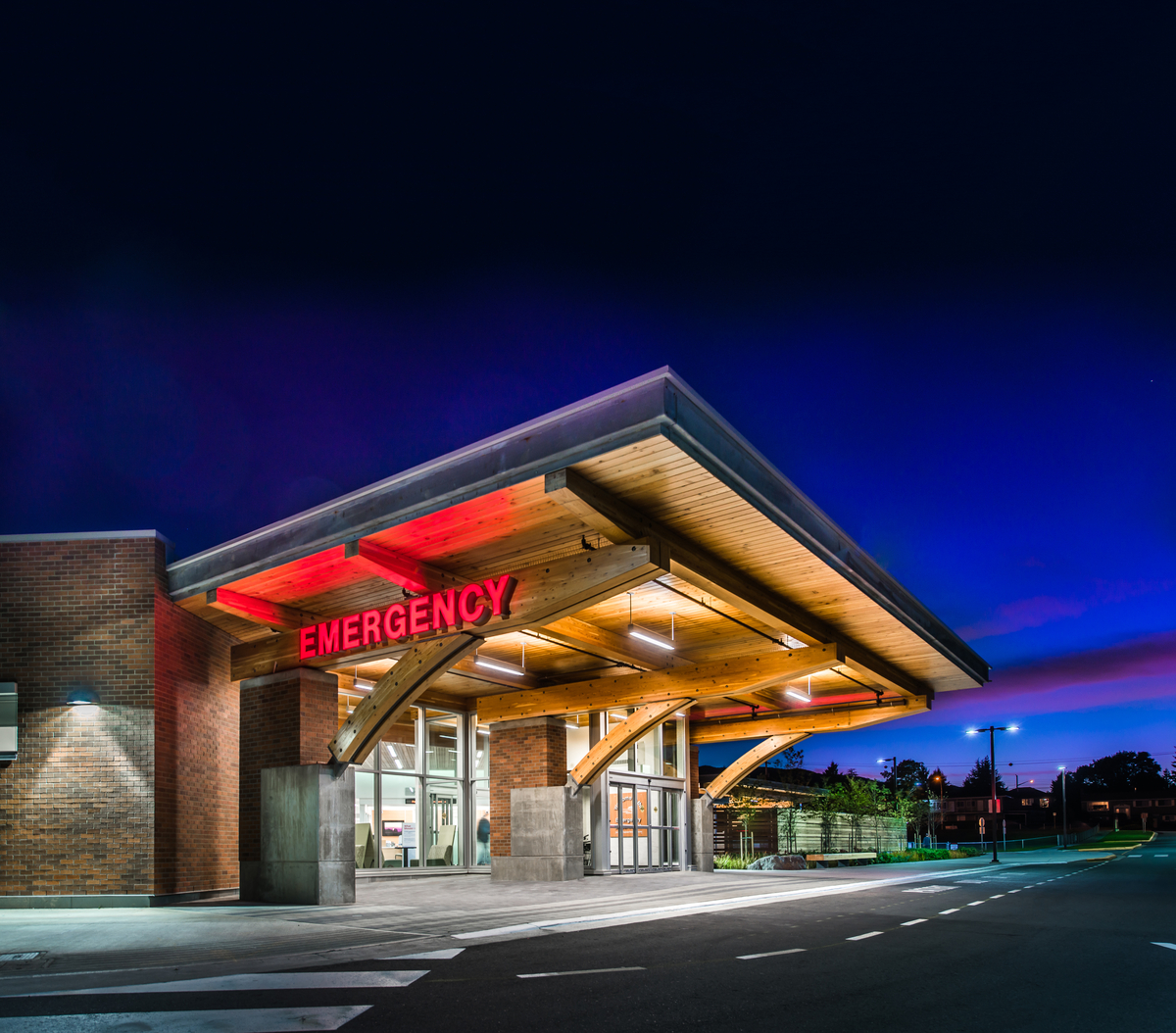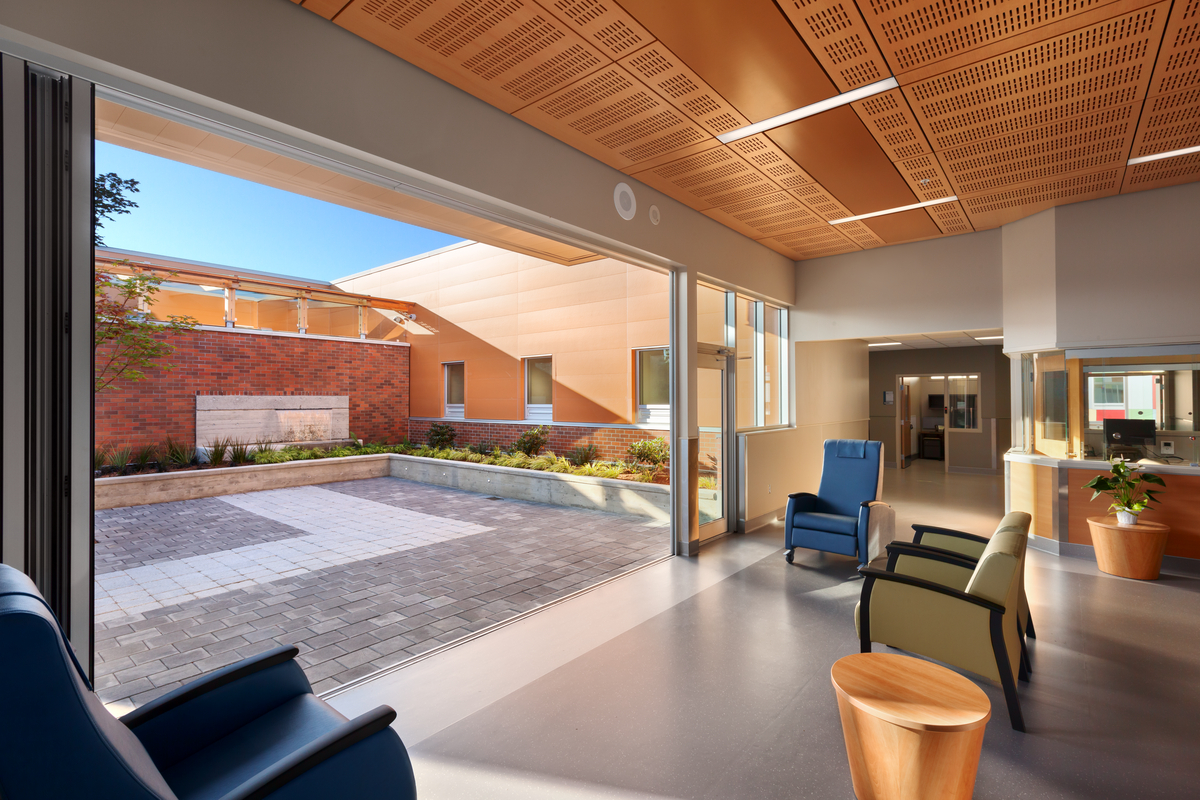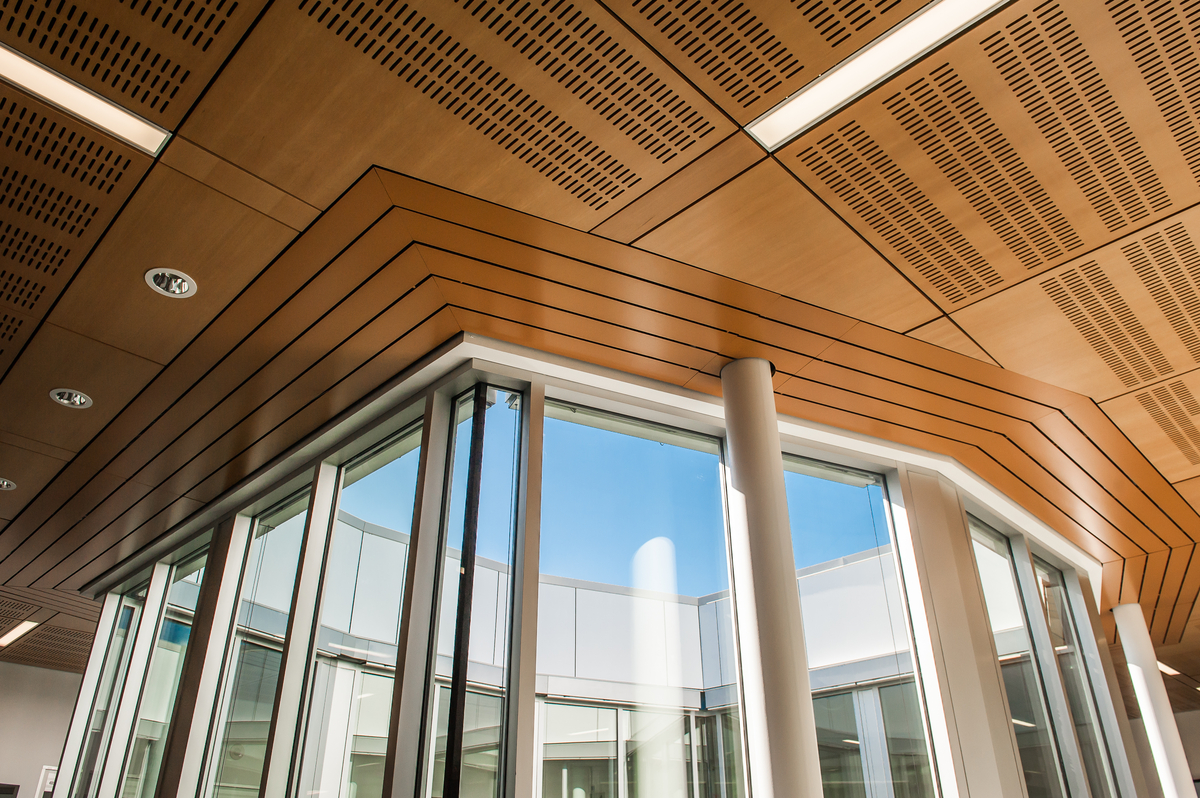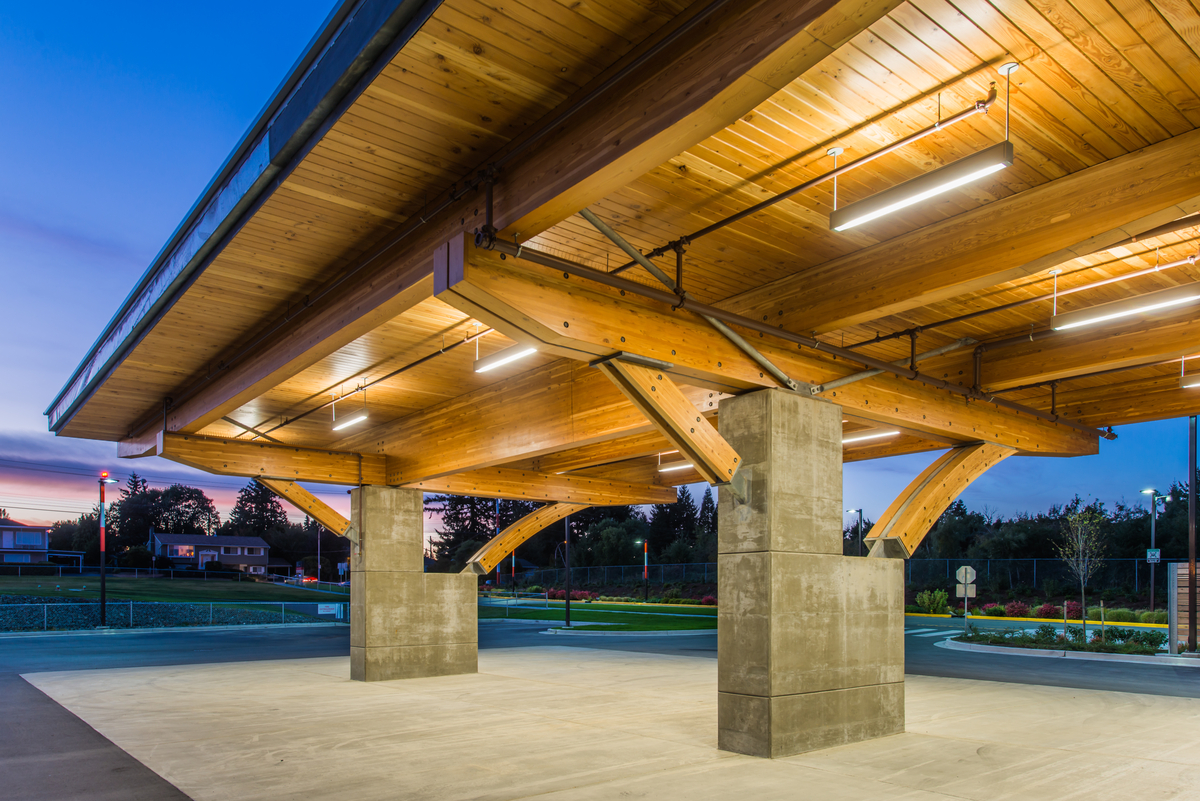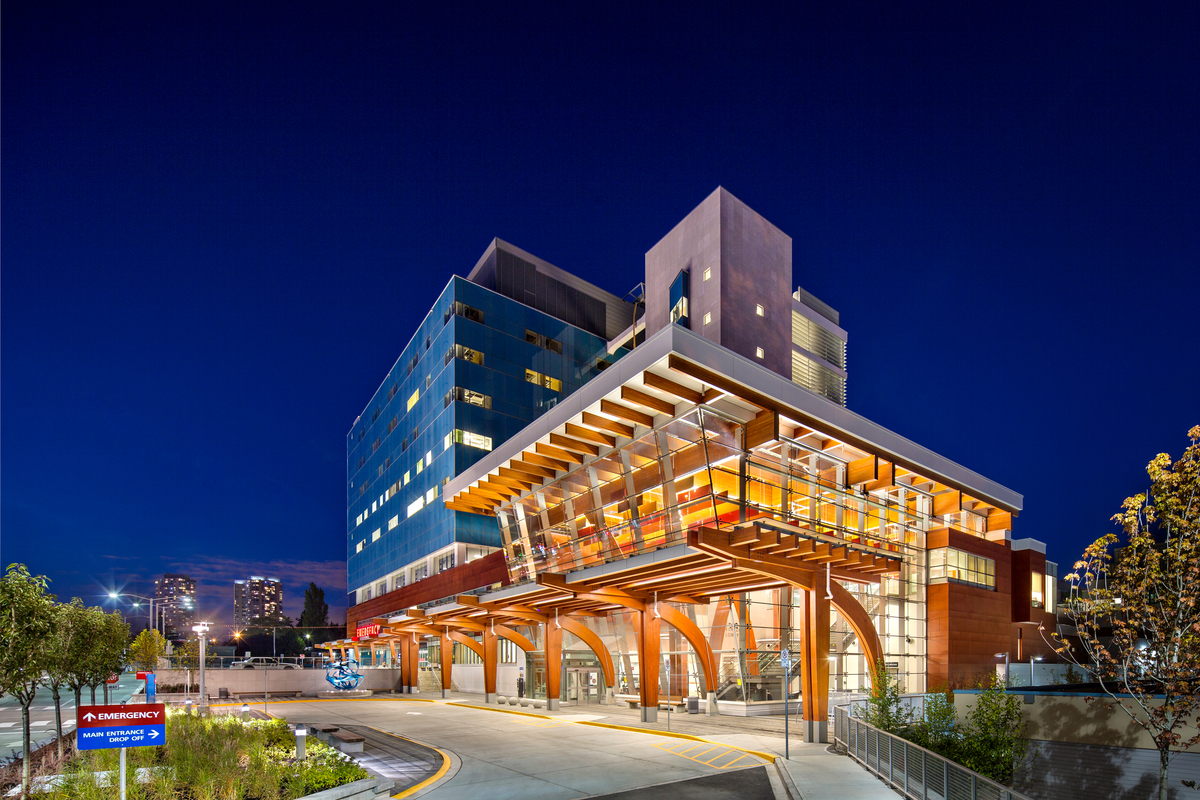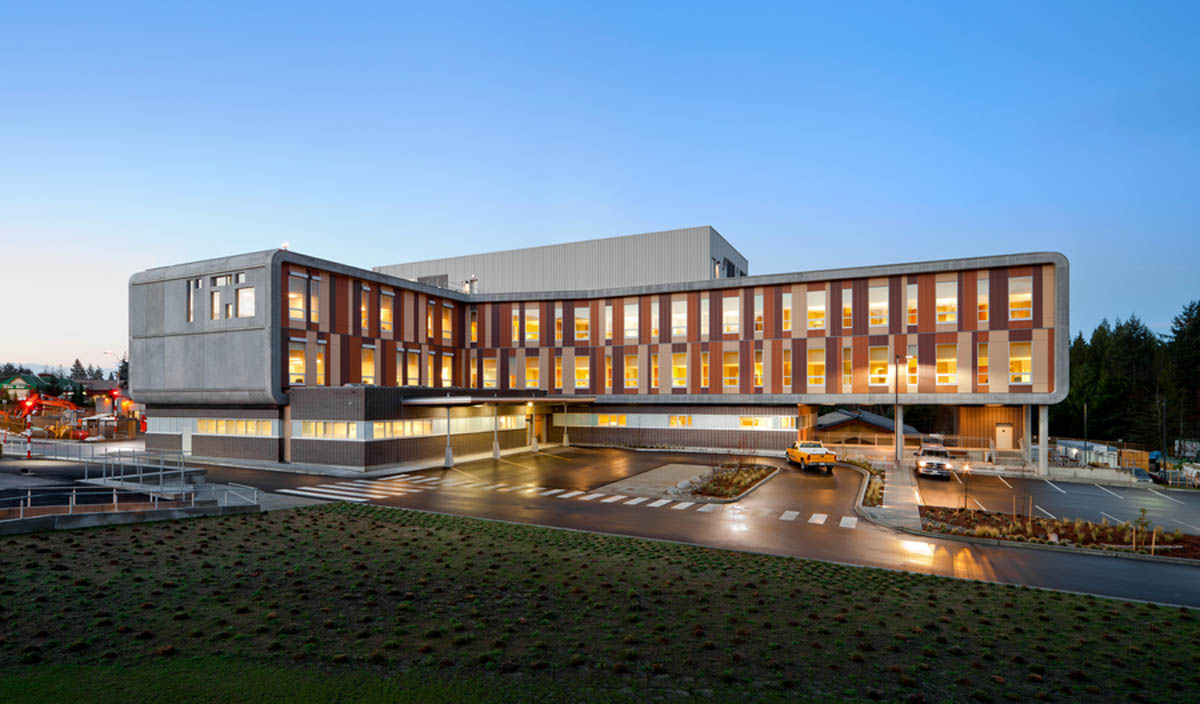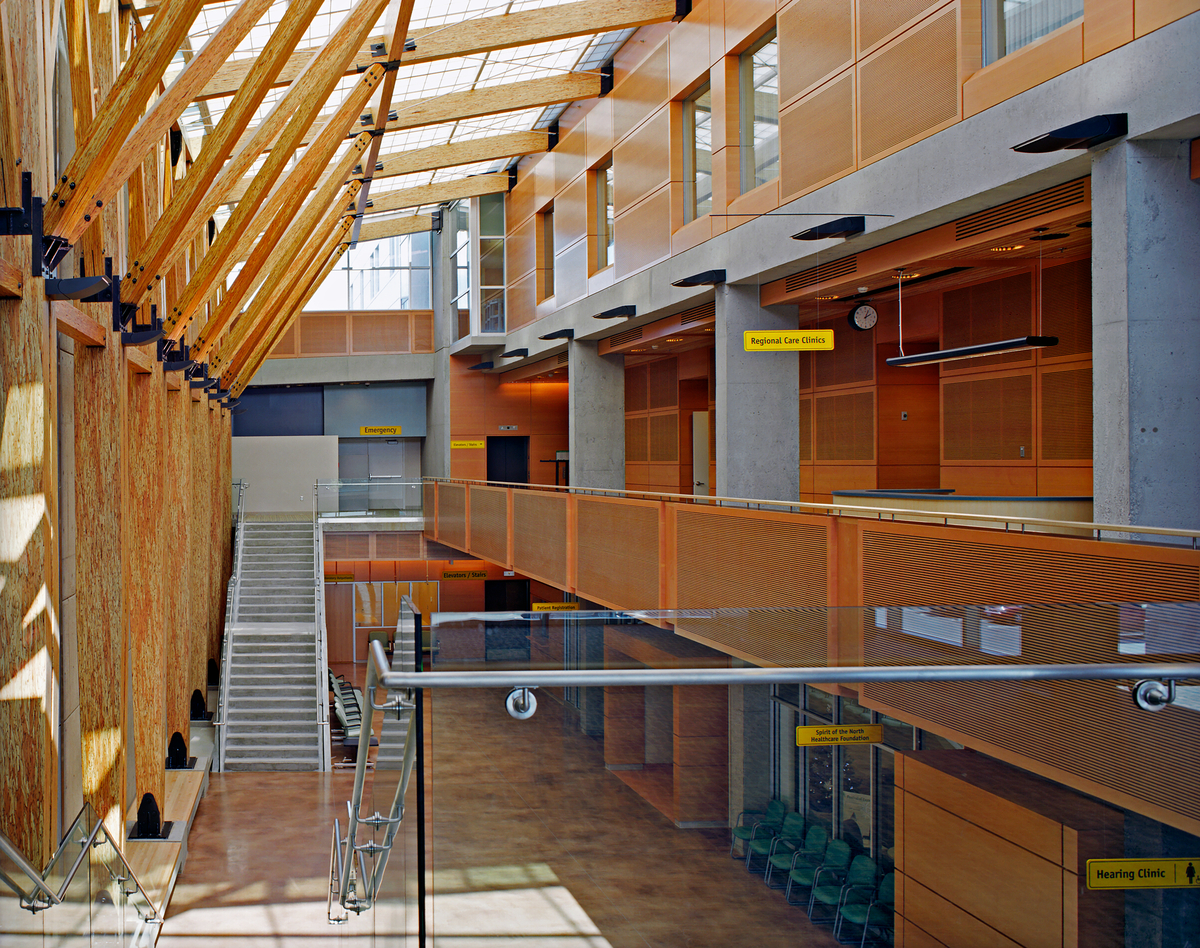A beautiful timber canopy greets visitors at the Nanaimo Regional General Hospital emergency entrance
Visitors are greeted at the Nanaimo Regional General Hospital (NRGH) emergency entrance by a striking heavy timber canopy, comprised of several large Douglas-fir glue-laminated timber (glulam) struts that support glulam beams.
- Douglas-fir glulam struts support the striking glulam and heavy timber canopy at the entrance.
- Douglas-fir elements on the exterior continue throughout the interior, such as seating benches and trims.
- The idea that wood can play an important part in a healing environment was key to the development of the emergency department project.
At the NGRH Emergency Department, the beneficial attributes of wood are introduced as soon as visitors approach the building: the entrance is marked by a prominent glulam and heavy timber canopy. The canopy is comprised of several diagonal Douglas-fir glulam struts that spring from concrete bases to support horizontal Douglas-fir glulam beams. A substantial secondary structure of solid Douglas-fir purlins and canopy decking sits atop the beams, forming an instantly striking structure of exposed wood.
Responding to growing community needs
The city of Nanaimo is located on the east coast of Vancouver Island in British Columbia. The NGRH serves the city of 85,000, as well as the surrounding Nanaimo Regional District. The old facility had reached the end of its useful life, with a rapidly growing population, technological advances in medical treatment, and an increasing emphasis on patient-centred care. The Vancouver Island Health Authority decided to rehabilitate the existing building and add a new 3,080-square-metre expansion.
Wood makes sense in a stressful environment
The idea that wood can play an important part in contributing to a healing environment is gaining acceptance among healthcare architects and practitioners. The project follows the ‘generative space’ approach to design. This approach endeavours to create an environment that improves physical and psychological health, quality of care, and quality of life for all building users, patients, and workers too. Among the strategies employed are access to daylight and views, physical and visual connection to nature, and the use of wood in both the interior and exterior of the building. Inside the emergency entrance, the lobby and reception are light and airy, with high ceilings and natural wood finishes. The waiting areas and treatment pods are facing five individual courtyards, with an abundance of natural light and garden views.
Exterior seating benches near the entrance are made from reclaimed Douglas-fir. Inside the building, a variety of applications showcases the complementary grain patterns and tones of different wood species. Hemlock, finished in a warm tone to match the Douglas-fir, has been used for perforated acoustic ceiling panels in the entrance lobby and other communal areas, while sanded solid maple handrails provide a warm and tactile accent to the main stair and continue along the connecting corridors. The link between the existing and new portions of the building is framed with Douglas-fir glulam and finished with fir paneling.
“A goal of the project was to create an environment that would be great for patients and staff, and a very important aspect of that was connection with nature. This was achieved with the courtyards bringing daylight in, as well as being able to get outside and experience the healing and calming effects of the outdoors. Use of wood both on the interior and exterior were part of our healing solution, and also supporting the BC Wood First values.”
Bruce Raber, vice president and healthcare sector lead for Canada, Stantec
